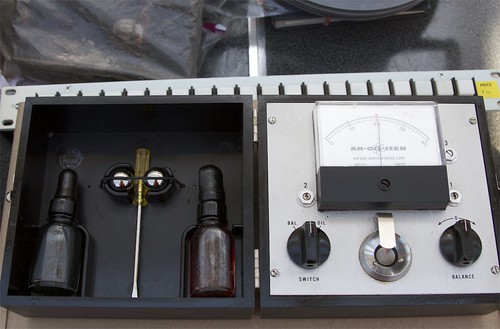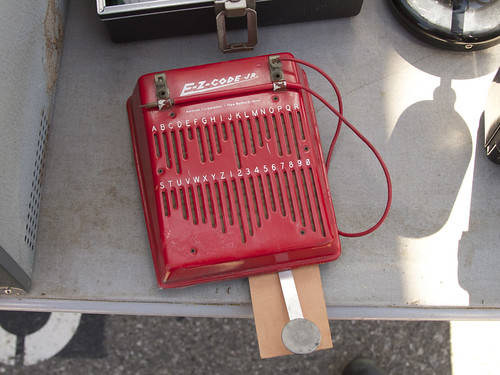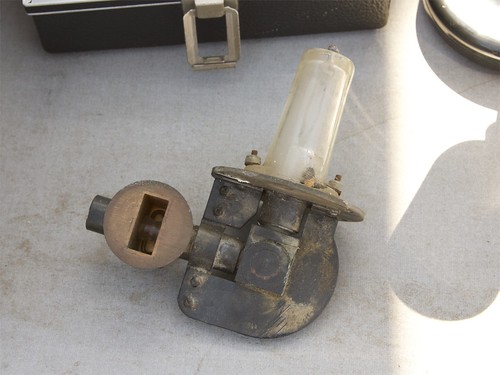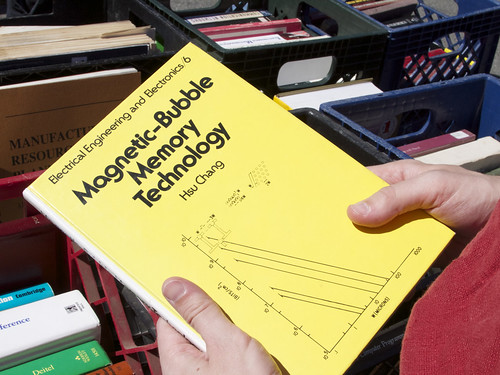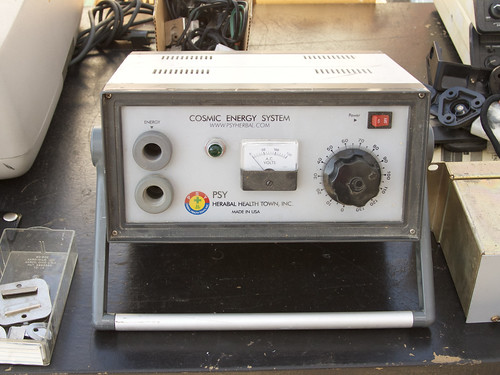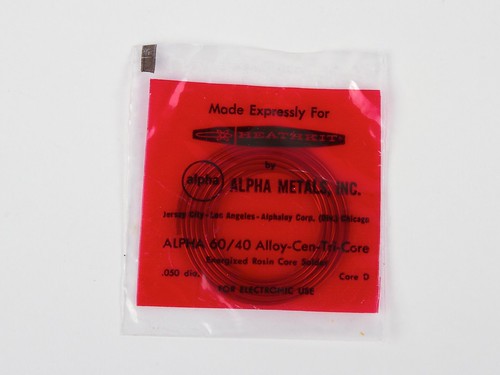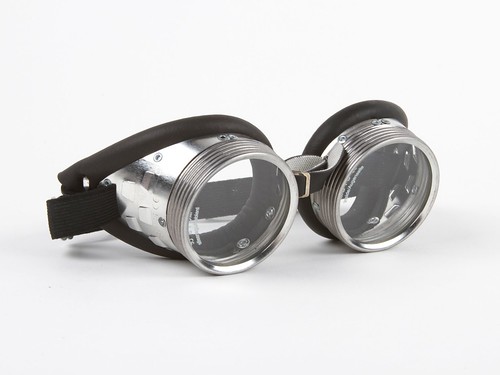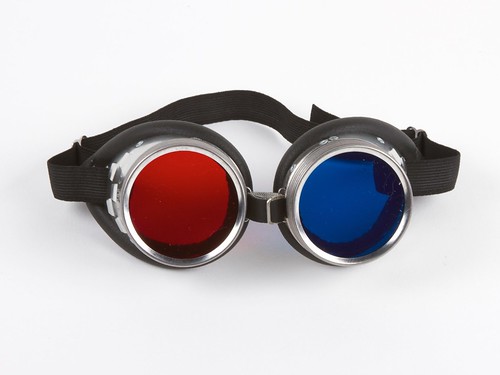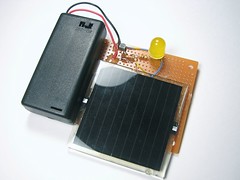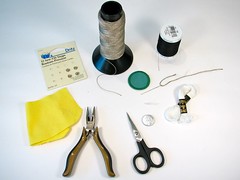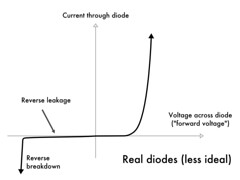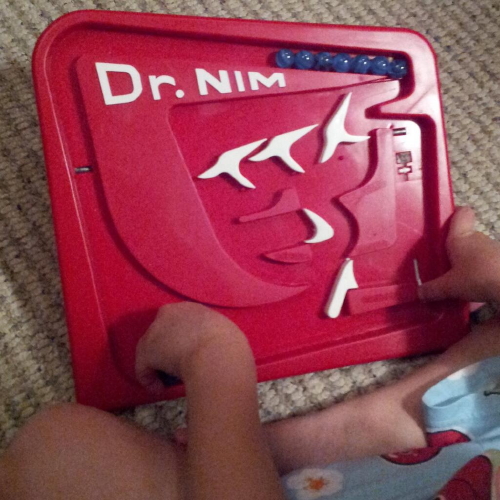
Our friend Brian (the designer of the EBB driver board which is used in the Eggbot) recently posted this picture on twitter, with the following caption:
Kids found 1966 ‘computer’ ‘game’ in the closet and LOVE it. Dr. Nim always wins. Our future may be OK.
Dr. NIM was designed by the same engineer, John Godfrey, who designed the Digi-Comp II, and it was manufactured in the mid-1960’s by the same company, E.S.R. Inc. It is even described in the same patent as the Digi-Comp II and works in the same manner, using mechanical flip-flops triggered by marbles. Only, to play the ancient game of Nim instead of doing binary calculations. We were very curious about how Brian came by one, and asked for more information. He wrote what follows:
We were on a week long vacation in Michigan. We rented a large house on the shore of Lake Michigan near Traverse City. The house looked like an extreme example of 1960’s decorating—nothing has been updated since. (Large tables with built-in ash trays, shag carpet, an old radio that had a “magic eye” that lit up when your FM radio station was ‘in hi-fi stereo’, etc.) And, in the closet with the games, was one called Dr. Nim. Us adults never gave it a second glance until one of the older kids noticed that it said “computer” on it, and pulled it out to see if she could get on Facebook with it. My ears perked up, and when I saw the front cover, I couldn’t stop playing with it. Which is not surprising considering my background as an embedded systems engineer. But what I couldn’t believe is that the kids loved it too! We were on vacation with 2 other families, each of which had 3 kids (like ours) of various ages. Very quickly, the 10 year old figured out how to beat Dr. Nim. Of course that made all the other kids want to try. Even the 4 year old learned to play. And then some of the other adults (even non-engineers) tried it for themselves, asking how it could possibly know how many marbles to take each turn so that it would (almost) always win. “How can pieces of plastic be a computer?” they asked. So we had a nice chat about where the term ‘computer’ comes from.
The thing that got me most excited was not that (modern) kids picked it up and were fascinated by it, nor that other adults were intrigued, but the thought that, in 1968 when it was available for sale to the general public, enough normal Americans bought it that it ended up in people’s game closets along with decks of cards and Monopoly. I suppose the thought of owning a ‘computer’ when such things were all the rage, was so new that spending a few dollars on a plastic mechanical game computer was something a lot of people did just out of curiosity.
And the instruction manual! I should have scanned it in. It has a mini-course in binary logic and boolean equations, ending with a discussion on how the game works, and how you can set it up in several different ways to play different games. And then it went on with “does this mean Dr. Nim can think?” and the open ended questions of machine thinking.
Too bad somebody doesn’t make something like that today . . . . <grin>
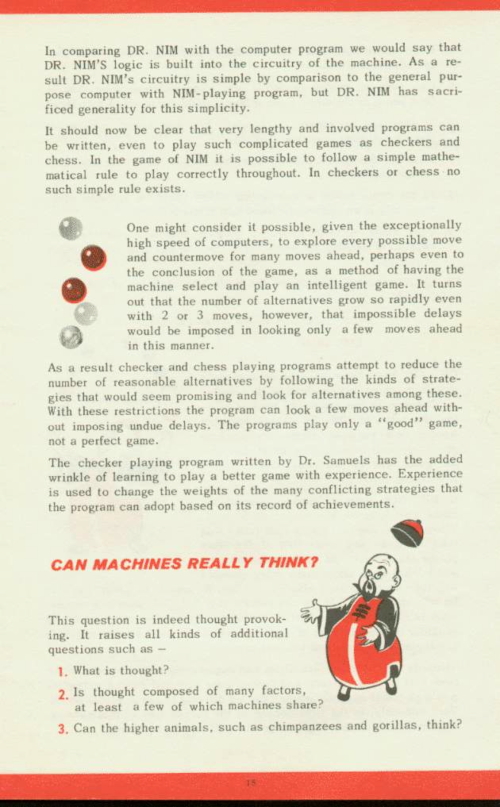
After Brian wrote back to us, we found the manual for Dr. Nim through the Friends of Digi-Comp group. (Dr. Nim games frequently come up on eBay as well, if you’re interested in playing with one.)
The manual is truly incredible, with in-depth discussions about not just the mechanism of the game, but commentary on the effect of computing on culture in the long run. We’ll leave you with a thought from the manual, c. 1965:
The strides that man has made in the last 15 years in developing machines that extend and supplement his thinking are truly astounding. Who can say what enormous strides will take place in the next 15 to 30 years?




